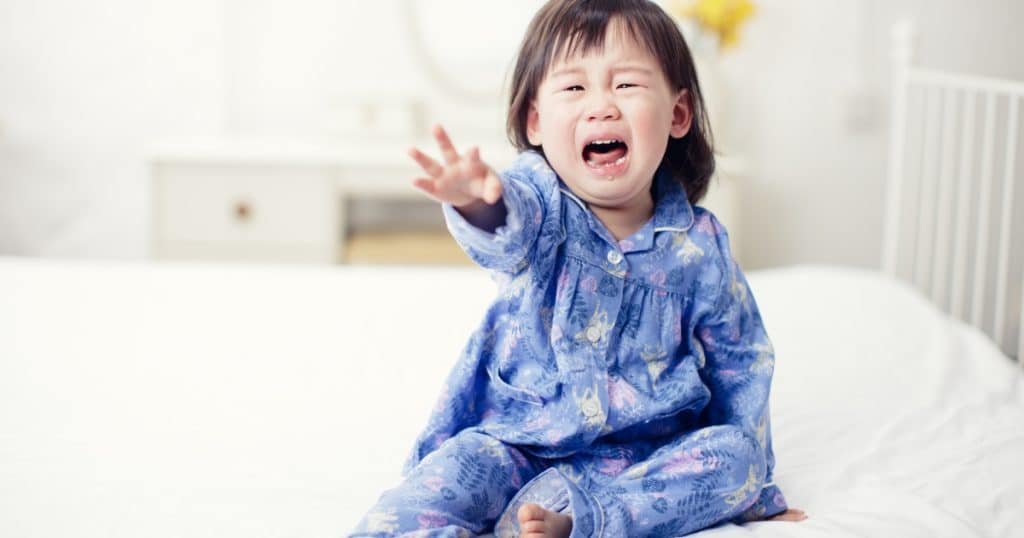Think about you’re in your favourite crowded grocery store, and somebody all of a sudden faucets your shoulder. In case you expertise autism contact aversion, that sudden contact may make your muscle tissue tense up. It’s as in case your physique have been reacting to a forceful impression fairly than a easy contact.
For a lot of autistic people, this isn’t simply gentle discomfort; it’s an ongoing problem rooted in sensory processing variations. Autism contact aversion refers to a powerful sensitivity to bodily contact, making on a regular basis interactions like handshakes or hugs distressing.
As a caregiver or autistic particular person, understanding the causes of contact aversion, recognizing the indicators, and studying methods to handle sensory sensitivities will help make bodily contact extra manageable.
Obtain your FREE information on
Sensory Processing Dysfunction The Final Information
Understanding autism and contact aversion
Autism contact aversion is when an individual feels uncomfortable and distressed by bodily contact. That is usually on account of sensory processing variations.
It’s not unusual for sometimes creating people to even have limits with contact. Nonetheless, some autistic folks could expertise a deeper sense of discomfort.
In comparison with different normal sensory sensitivities, contact aversion is fully about an individual’s bodily interactions and their general bodily consolation.
For instance, a 10-year-old autistic little one refuses to take part in a bodily training class exercise as a result of he doesn’t wish to high-five others as plenty of his classmates do.
His trainer may assume he’s being tough and avoiding issues on goal. On this case, it could be a good suggestion for a father or mother to clarify the difficulty to the varsity. The trainer might then talk with the remainder of the category and recommend different types of reward.
A variety of the time, folks on the spectrum keep away from bodily contact on account of autistic contact aversion brought on by neurological processing difficulties.
Indicators of autism contact aversion
When an autistic particular person reacts to the touch, their reactions may be very noticeable to others.
Possibly somebody reacted negatively in response to some bizarre motion you probably did. That’s what can occur in these sorts of conditions with autistic folks.
Typically, it could actually simply be very refined discomfort, whereas at different occasions, the particular person may be extraordinarily distressed.

As a result of the autism spectrum is so huge, such discomfort ranges do range from individual to individual.
Listed here are some widespread indicators of autism contact aversion:
- Flinching or pulling away from contact: The particular person stiffens or swiftly pulls away when somebody tries to the touch them.
- Avoiding hugs, handshakes, or different bodily contact: For instance, the particular person could want waving as a substitute of bodily contact to categorical affection.
- Changing into visibly distressed when touched: Emotional facial expressions, physique language, and verbal communication could strongly point out discomfort, even when the contact is mild.
- Intensely reacting to mild touches however tolerating deep strain: The particular person may need sensitivities that is likely to be tough for the common particular person to grasp whereas not minding and even having fun with weighted blankets or robust hugs.
- Wanting particular textures of clothes or objects: The particular person could also be notably strong-minded about sporting smooth clothes to forestall pores and skin irritation.
One other instance may very well be in case your little one turns into upset when having their hair brushed, however they completely love hugging others. This reveals that they don’t like prickly actions on their pores and skin, however they do like being held.
Causes of aversion to the touch in autism
Sensory processing variations are the principle explanation for autistic contact aversion. This implies the mind could interpret contact stimuli in another way than most neurotypical folks.
This mind interpretation contains the nervous system struggling to course of sensory stimuli. This will result in an autistic particular person feeling uncomfortable in conditions the place they will’t simply keep away from bodily contact.
Analysis suggests an autistic particular person could have vital variations in some mind areas, such because the somatosensory cortex.
This area is liable for processing contact. As a result of it capabilities in another way, it could actually result in contact aversion and hypersensitivity in autism.
As well as, stronger neural responses to tactile stimulation can result in tactile defensiveness and the avoidance of social contact at almost all prices. This will make contact appear very exaggerated or unpredictable.
All of this may occasionally lead to sensory overload.
For instance, whereas a neurotypical particular person may contact a metallic floor with no second thought, an autistic particular person might expertise it as an intense, virtually burning sensation, triggering a fight-or-flight response.
After all, this doesn’t apply to all autistic folks, however it could actually apply to many.
How contact aversion impacts every day life
Contact aversion could have an effect on many components of an autistic particular person’s every day life.
These challenges can vary from hugging shut members of the family to shaking a brand new acquaintance’s hand when first assembly them.
With household relationships, many people know that it’s widespread for folks to interact in numerous sorts of bodily affection.
Nonetheless, some autistic folks could transfer away or really feel noticeably tense when a member of the family tries to hug them. This may make relative relationships harder in the event that they aren’t keen to grasp.
Equally, friends could also be confused when an autistic little one refuses to high-five them. Being on a crowded transit bus may also be tough, particularly after they don’t have any selection however to face near folks to the purpose of their arms touching.

Obtain your FREE information on
Sensory Processing Dysfunction The Final Information
Autistic people could even battle to go to public areas the place they could have to face near different folks, similar to supermarkets.
Typically, contact aversion in an autistic particular person may imply elevated social isolation just because they attempt to keep away from conditions that will result in bodily contact.
Managing autism contact aversion
As with supporting anybody, your method to serving to an autistic particular person with contact aversion have to be considerate and tailor-made to their particular wants.
Once you attempt to use good methods, consistency, endurance, and respect, you may assist the autistic particular person handle their sensory challenges effectively. This manner, you may make them really feel safer and understood.
Some methods you may embody are:
- Introduce contact steadily and on their very own phrases: Begin with mild touches and permit the particular person to proceed at their very own tempo. At all times ask for permission first.
- Make use of deep strain methods in the event that they like them: Weighted blankets, compression garments, or agency hugs may be comforting for autistic people who take pleasure in deep strain. They could additionally assist regulate their responses.
- Respect the particular person’s preferences and use different greetings: If the particular person finds hugging and handshakes uncomfortable, permit them to acknowledge you verbally, wave, or nod as a substitute.
- Create a protected atmosphere with selection: Think about together with predictable routines to forestall sudden touching, similar to going to a mall at a much less crowded time. Social tales can also be a great way to clarify societal expectations.
When to hunt skilled assist
Though many autistic folks could handle their autism contact aversion effectively, typically skilled steerage could also be obligatory.
Indicators that skilled help could also be a good suggestion embody:
- Extreme misery or concern associated to the touch: The particular person reacts to the touch with nervousness, avoidance, or meltdowns even of their most secure and most acquainted environments.
- Issue managing contact regardless of utilizing methods: There doesn’t appear to be a lot progress with the methods which have been tried.
- Influence on high quality of life: Essentially the most important duties, similar to dressing, bathing, and haircuts, are extraordinarily overwhelming.
Who will help? You’ll be able to contact occupational therapists who focus on sensory integration and autism specialists. At all times be sure that these companies can successfully meet the autistic particular person’s wants.

Early intervention with contact sensitivity is vital as a result of it could actually forestall additional difficulties with important duties later in life.
The extra customized the method is, the higher the autistic particular person can enhance their well-being in touch-related conditions.
Embracing sensory variations with endurance and care
Autism contact aversion isn’t a behavioral difficulty however a neurological expertise, usually brought on by sensory processing variations.
Bodily contact may be overwhelming, unpredictable, and even painful, which might make interactions much more difficult. Utilizing the proper methods to handle the difficulty can create an excellent atmosphere for autistic folks.
Respecting the particular person’s boundaries, introducing contact slowly, and providing extra sensory-friendly options could make significant variations in an autistic particular person’s life.
These variations are sometimes life-changing sufficient that these folks can finally really feel extra assured with interactions that embody contact.
FAQs
Q: Is contact aversion a symptom of autism?
A: Autism contact aversion is a standard attribute as a result of many individuals on the spectrum have sensory processing variations that make bodily contact overwhelming. That is due to how the nervous system interprets contact stimuli.
Q: Do autistic folks have a sensitivity to the touch?
A: Many autistic people are hypersensitive to the touch. Nonetheless, what they’re delicate to can range. Some could even be under-responsive to the touch. The atmosphere, stress ranges, or sensory overload may also be vital elements in whether or not an individual can be delicate to the touch.
Q: How do autistic youngsters present love?
A: Autistic kids can present love in ways in which don’t at all times contain bodily affection, which embody sharing pursuits, spending time with family members, giving significant presents, and expressing their love via actions (for instance, being excited when a beloved one is current).
Q: Do autistic youngsters like hugs?
A: Some autistic kids adore hugging, whereas others could discover it overwhelming or uncomfortable due to their sensory sensitivities.
References
Autism Parenting Journal. (2025, January 10). Autism and Hugging: Understanding Social Challenges. Autism Parenting Journal. https://www.autismparentingmagazine.com/autism-and-hugging/
Christopher, S. (2019). Contact hypersensitivity in kids with autism–An evaluation. Worldwide Journal of Analysis and Analytical Critiques, 6(2), 616-622. http://ijrar.com/upload_issue/ijrar_issue_20543588.pdf
Subject, T., & Lasko, D. (1997). Transient report: autistic kids’s attentiveness and responsivity enhance after contact remedy. Journal of Autism & Developmental Issues, 27(3). https://search.ebscohost.com/login.aspx?direct=true&profile=ehost&scope=website&authtype=crawler&jrnl=01623257&asa=N&AN=9707070404&h=11CtLlpercent2Byigo4029gvmhVphMO30GlI2T5percent2FSKN8lhCSotT8EcJLiIYWwhfwlSSxuT7DaVp7lRIZqqdKGH1X66LGQpercent3Dpercent3D&crl=c
Henderson, E. F. (2022). Autism, autonomy, and contact avoidance. Incapacity Research Quarterly, 42(1). https://dsq-sds.org/index.php/dsq/article/view/7714
Khan S, Michmizos Okay, Tommerdahl M, Ganesan S, Kitzbichler MG, Zetino M, Garel KL, Herbert MR, Hämäläinen MS, Kenet T. Somatosensory cortex purposeful connectivity abnormalities in autism present reverse developments, relying on route and spatial scale. Mind. 2015 Could;138(Pt 5):1394-409. doi: 10.1093/mind/awv043. Epub 2015 Mar 12. PMID: 25765326; PMCID: PMC5013931.
Ujiie, Y., & Takahashi, Okay. (2022). Associations between self-reported social contact avoidance, hypersensitivity, and autistic traits: Outcomes from questionnaire analysis amongst sometimes creating adults. Persona and Particular person Variations, 184, 111186. https://www.sciencedirect.com/science/article/pii/S0191886921005651


